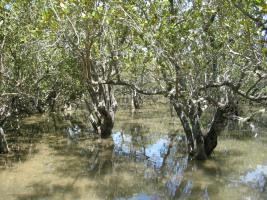Reponding
In the last 100 years Britain has lost over half of its natural ponds.

In the last 100 years Britain has lost over half of its natural ponds due to land drainage and building and the threat to precious aquatic wildlife is unfortunately ever increasing. Recent research has shown 80% of wildlife ponds in the UK are in a poor or very poor state.
In the late 18th century natural ponds were estimated to be around 1.2 million and now only 400,000 are left and of that, only 20% are considered a priority habitat, meaning of significant conservation and ecological importance. Those that remain are often polluted or managed for the leisure industry and rarely support an abundance of even common species, so it is no wonder why some of our aquatic and sub aquatic wildlife has suffered dramatic falls in population and may even be under threat of extinction.
Creating a wildlife pond helps to encourage wildlife into your garden by recreating lost habitat. Few will be suitable for more specialised freshwater species but species like the Common Frog now do better in man-made garden ponds than the wilder countryside. And this is good news for reducing slugs and snails in your garden as they form part of the Frogs diet.
Even very small water bodies will create a habitat for some species, from water troughs to garden containers filled with rain water; if left even for a short period of time they will attract an abundance of aquatic invertebrates. Wildlife ponds create ‘stepping stones’ for wildlife to migrate from one place to the next and suitable habitats for breeding and feeding
.jpg) Contact Chris Davies about this page:
Contact Chris Davies about this page:
Related pages...

Young Environmentalist 2025 District Final
more Held at Kimbolton Castle

Club Environmental Activities
more The Clubs in the District engage in various Environmental Projects

Rotary and Treekly
more Treekly is an app which turns “footsteps into forests”. Mangrove trees are planted as a reward for users who adopt and maintain a daily walking habit of 5000 steps. Good for your health. Good for our planet.

Be a Hero, Go Net Zero
more Environmental Sustainability Rotary Action Group (ESRAG)
Wildometer
more Individual Club Environmental Achievements since 2019
back to page above this...

Protecting the Environment
back Rotary members are tackling environmental issues the way they always do - Coming up with projects, using their connections to change policy and planning for the future